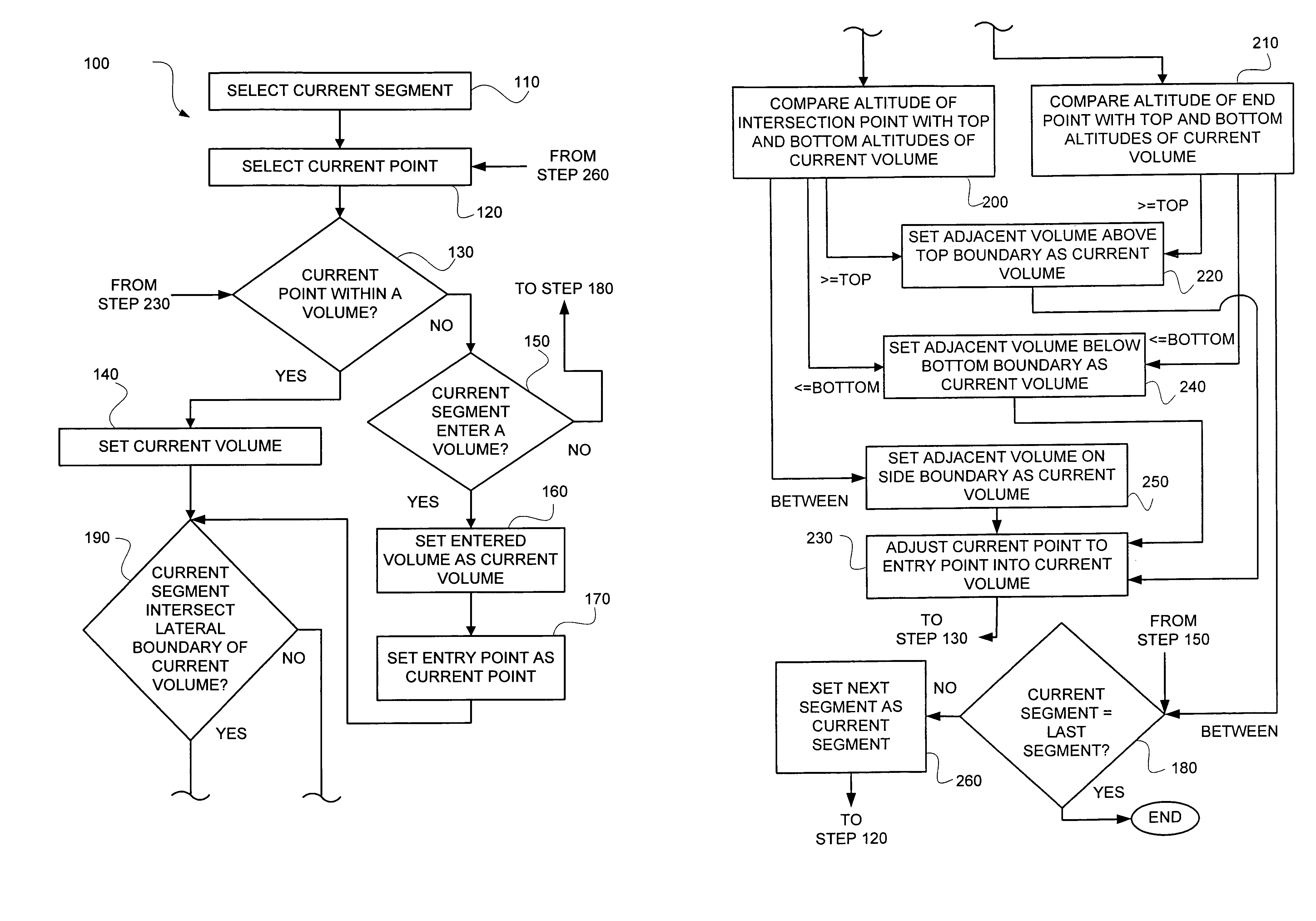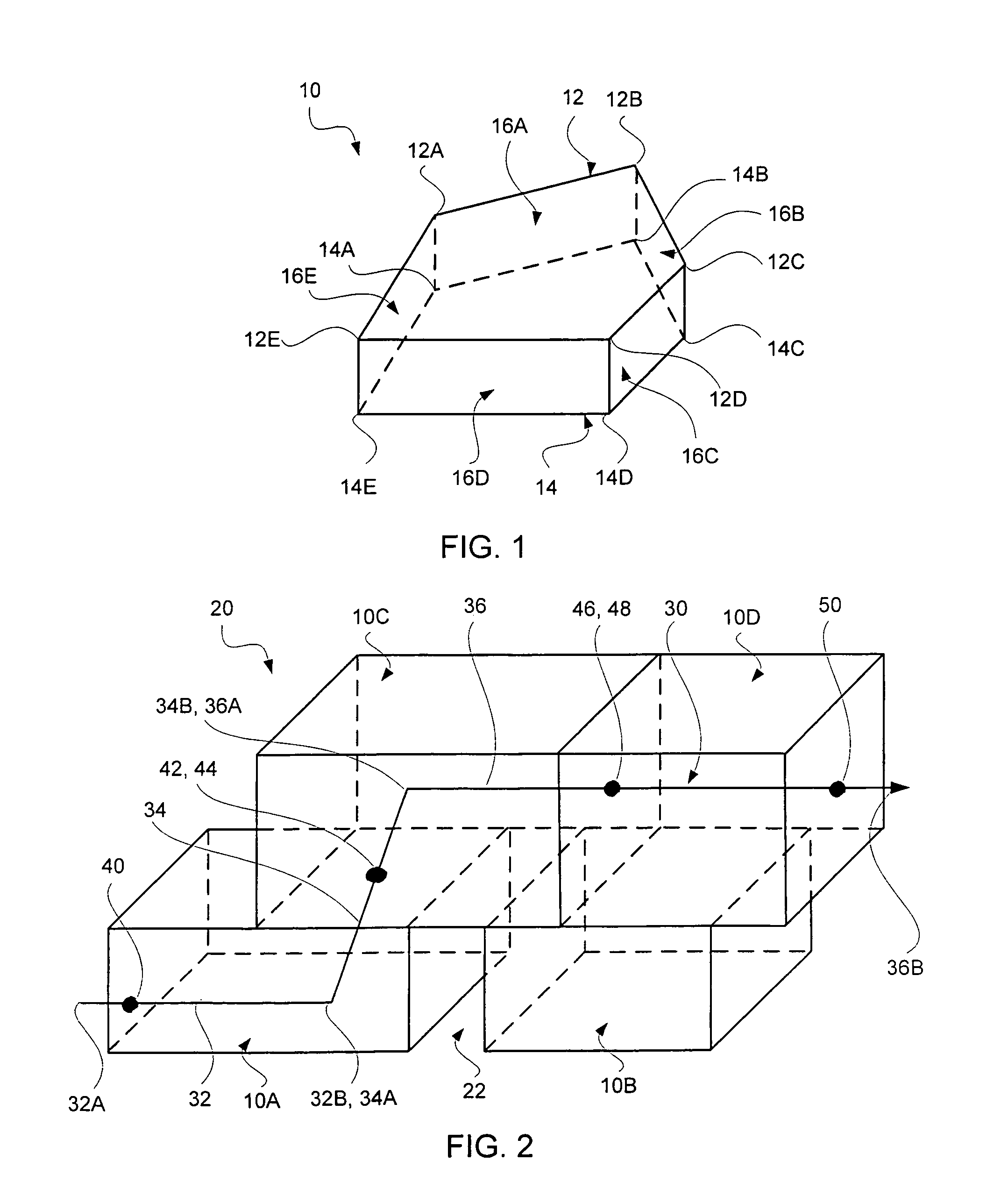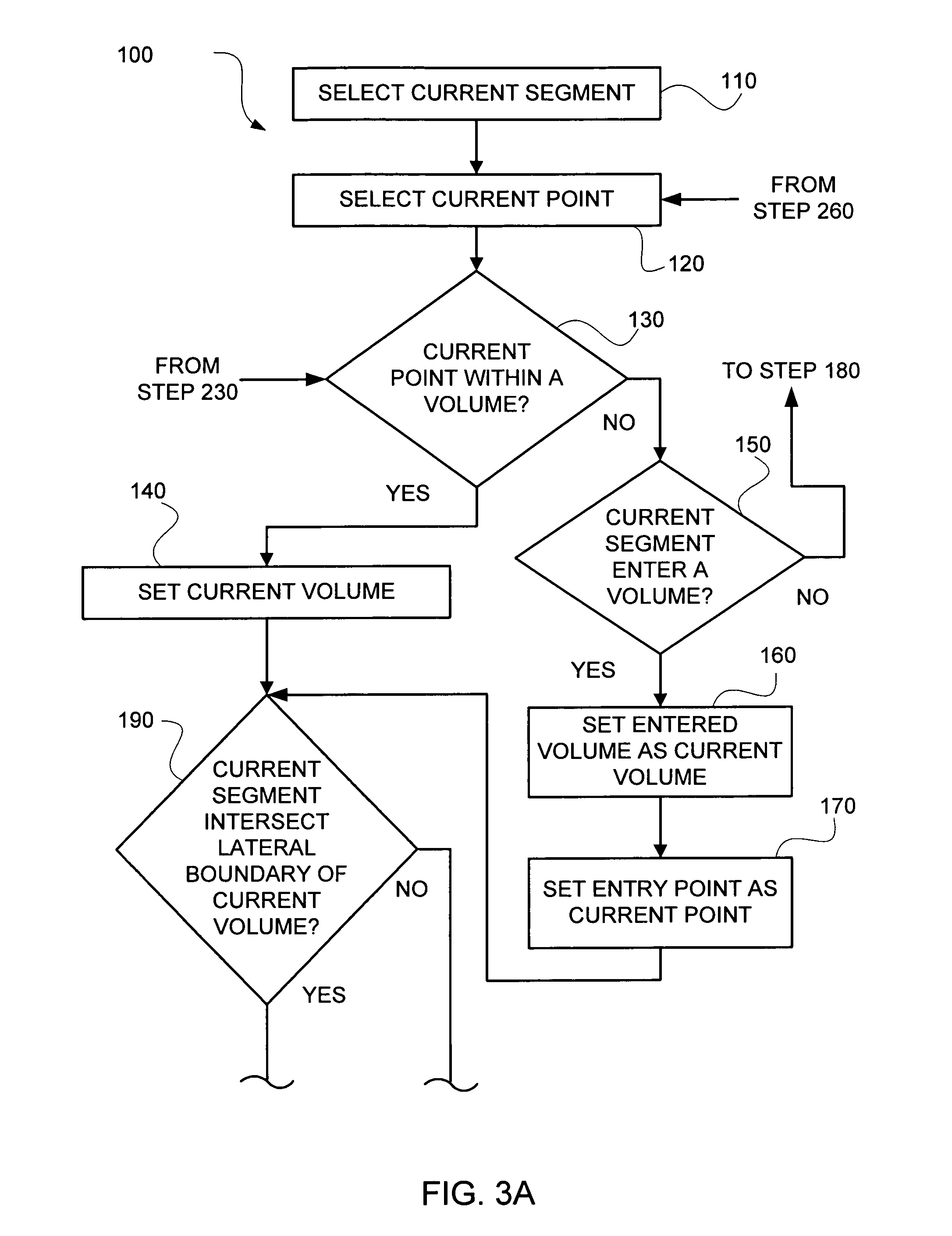Determining intersections of multi-segment three-dimensional path with portions of partitioned three-dimensional space
a three-dimensional space and multi-segment technology, applied in the field of air traffic modelling, can solve the problems of incomplete comparison of such segments and a computationally intensive process
- Summary
- Abstract
- Description
- Claims
- Application Information
AI Technical Summary
Benefits of technology
Problems solved by technology
Method used
Image
Examples
Embodiment Construction
[0026]FIG. 1 shows an exemplary volume 10 which may be included in a partitioned three-dimensional space, such as an airspace. The volume includes a horizontal polygonal top surface 12, a horizontal polygonal bottom surface 14, and a plurality of vertical rectangular side surfaces 16A-16E. The top and bottom surfaces 12, 14 are identically shaped and sized and are defined by the geodetic coordinates (latitude, longitude, and altitude) of their respective corners 12A-12E, 14A-14E. The altitude of each top corner 12A-12E is the same, and the altitude of each bottom corner 14A-14E is the same and is lower than the altitude of the top corners 12A-12E. Although the volume 10 is depicted having five respective top and bottom corners 12A-12E, 14A-14E and five side surfaces 16A-16E, the volume 10 may have fewer than five top corners, bottom corners, and sides, or more than five top corners, bottom corners, and sides. Although the embodiment of the intersection determination method described...
PUM
 Login to View More
Login to View More Abstract
Description
Claims
Application Information
 Login to View More
Login to View More - R&D
- Intellectual Property
- Life Sciences
- Materials
- Tech Scout
- Unparalleled Data Quality
- Higher Quality Content
- 60% Fewer Hallucinations
Browse by: Latest US Patents, China's latest patents, Technical Efficacy Thesaurus, Application Domain, Technology Topic, Popular Technical Reports.
© 2025 PatSnap. All rights reserved.Legal|Privacy policy|Modern Slavery Act Transparency Statement|Sitemap|About US| Contact US: help@patsnap.com



